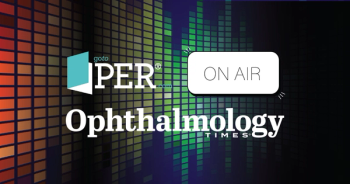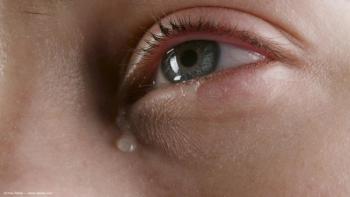
- Ophthalmology Times: September/October 2025
- Volume 50
- Issue 5
The mechanics of presbyopia: From muscle movement to functional vision
Key Takeaways
- Presbyopia-correcting eye drops enhance depth of focus by constricting the pupil, using cholinergic agonists to activate the iris sphincter muscle.
- FDA-approved options include pilocarpine, aceclidine, and carbachol, with some products also inactivating the iris dilator muscle.
How pupil modulation and pharmacologic targeting shape near vision outcomes.
Presbyopia-correcting eye drops share a common mechanism: They are miotic agents designed to create a smaller pupil. The power of the pupil to extend depth of focus is impressive, as observed in patients with smaller pupils who seem to age without needing reading glasses or in the common experience of bright light making small fonts more readable. However, the mechanics of how miotics work vary from drop to drop.
Three presbyopia-correcting eye drops have received FDA approval: pilocarpine 1.25% (Vuity; AbbVie Inc), pilocarpine 0.4% (Qlosi; Orasis Pharmaceuticals, Ltd), and aceclidine 1.44% (Vizz; LENZ Therapeutics, Inc). Additionally, 2 more products—a fixed combination of carbachol 2.75%/brimonidine tartrate 0.1% (Brimochol PF; Tenpoint Therapeutics, Ltd) and phentolamine 0.75% (MR-141/Nyxol; Opus Genetics, Inc/Viatris Inc)—are progressing through the FDA approval process.
Most active ingredients in presbyopia-correcting eye drops, including pilocarpine, aceclidine, and carbachol, are direct-acting cholinergic agonists that activate the iris sphincter muscle, causing pupil constriction. We also have 2 drugs—phentolamine and brimonidine—that prevent pupil mydriasis by inactivating the iris dilator muscle.
Phentolamine is an α-adrenergic antagonist that blocks receptors on the radial iris dilator muscles. It also has some indirect muscarinic antagonist effects on the iris sphincter muscle. Phentolamine ophthalmic solution 0.75% is currently available for the reversal of mydriasis (Ryzumvi; Viatris Inc), but the same concentration is being studied for the treatment of presbyopia and night vision disturbances after keratorefractive surgery.
The other option is the fixed-combination eye drop, which, in addition to carbachol 2.75%, includes brimonidine tartrate 0.1%, an α2 adrenergic agonist with an interesting mechanism of action. It acts on the presynaptic nerve endings that stimulate the dilator muscle, signaling those neurons to release less norepinephrine, thereby reducing the contraction of the dilator muscle. Including brimonidine tartrate 0.1% in a fixed combination with the miotic carbachol 2.75% has been shown to increase the bioavailability of carbachol, apparently by altering aqueous dynamics and prolonging the pupil effects.1 We also know that brimonidine tartrate 0.025% (Lumify; Bausch & Lomb Americas Inc) has effectively reduced ocular redness.
All the presbyopia-correcting eye drops that are available or in clinical trials utilize iris sphincter activation alone or in combination with dilator inactivation.
Ciliary muscle effects
A secondary effect of presbyopia-correcting eye drops is that there may be some activation of the ciliary muscle, subtly generating some true accommodation that contributes to the medications’ efficacy in expanding depth of focus. However, this activation of the ciliary body is also likely responsible for unwanted transient symptoms that some patients experience, such as mild brow ache or headache.
Some clinicians have been concerned that if presbyopia-correcting eye drops are acting on the ciliary body at all, they could be causing peripheral retinal stress and increasing the risk of retinal detachment (RD). In the clinical trials of presbyopia-correcting eye drops, there have not been any incidents of RD, although some cases were reported with the commercial use of pilocarpine 1.25%. Clinicians should take care to perform a thorough retinal evaluation before prescribing these eye drops and avoid using them in patients with an elevated risk of RD due to high myopia (including those who are postmyopic LASIK with high corrections), lattice degeneration, poorly controlled diabetes, or a history of retinal tears, macular holes, or retinoschisis.
Developers of presbyopia-correcting eye drops have also taken steps to alleviate negative impacts on the ciliary body, including reducing the concentration of pilocarpine, introducing molecules such as aceclidine and carbachol that seem to be more selective for the sphincter muscle, or combining carbachol with brimonidine, which mitigates contraction of the ciliary muscle. Data from several clinical trials have reported on vitreous detachment (VD) rates, which are a good indication of peripheral retinal stress. There were low rates of VD in trials for both pilocarpine 0.4%2 and the fixed combination of carbachol 2.75%/brimonidine tartrate 0.1%, consistent with what was previously known about the combination’s active ingredients.3
Functional vision
As presbyopia-correcting eye drops continue to be launched, additional insights will emerge about how each product achieves near vision functional outcomes in the real-world environment. Patients want to be able to navigate the world and perform their daily tasks with less dependence on glasses. There are ways to look at functional vision that go beyond a 3-line improvement in near vision. Most companies report 2-line gains, which patients may find sufficient for intermediate and near tasks. Consideration of pupil size over time, adaptability to varying lighting conditions, use of spectacles, and reading performance also serve as important metrics for evaluating functional near vision.
For example, it is intuitive that a patient who needs a 1.50-D add will read faster and more accurately with the add power in their glasses than if they were trying to read the same passage with distance-only glasses. In the clinical trial of the fixed-combination eye drop of carbachol 2.75%/brimonidine tartrate 0.1%, the patients’ vision was uncorrected—the only change was the pupil diameter from using the drop—yet patients still had a 39% improvement in reading speed on the validated MNREAD test developed by the University of Minnesota to gauge reading performance.4 This highlights the real-world functioning of these eye drops.
Clinicians are also likely to hear much about optimal pupil sizes with presbyopia-correcting eye drops. A pupil that is too small or remains small for too many hours may cause dimming or poor contrast for patients in low-light conditions. This is one of the reasons that the small-aperture IOL (IC-8 Apthera; Bausch + Lomb Surgical), which has a central aperture of 1.38 mm, is approved for use in just 1 eye of a patient. Driving performance with pilocarpine 1.25% has been studied using a closed driving course at twilight.5 Compared with placebo, the pilocarpine group had worse night-driving performance overall. It remains unclear whether pupil size alone explains the difficulty experienced during night driving, and it will be important for other presbyopia-corrected agents to be evaluated in similar types of studies.
Optical modeling suggests that the optimal pupil size in natural light is between 1.6 and 2.0 mm, 2.4 and 3.0 mm in mesopic conditions, and 2.8 and 3.5 mm in scotopic or very low light conditions.6 Therefore, a 2- to 3-mm–sized pupil probably offers a good balance for most patients, providing some adaptability to varying light conditions throughout their day.
There is still much to learn about these agents as the range of presbyopia-correcting eye drops available to patients expands. All clinicians must develop a nuanced understanding of their mechanisms of action and impact on functional vision.
Mile Brujic, OD, FAAO
Brujic is a partner at Premier Vision Group in Northwest Ohio. He also owns Optometric Insights, a service providing career coaching to optometrists. He has consulted for AbbVie, LENZ Therapeutics, Orasis Pharmaceuticals, and Tenpoint Therapeutics.
Sumit (Sam) Garg, MD
Garg is a professor, the vice chair of clinical ophthalmology, and the medical director of the Gavin Herbert Eye Institute at the University of California, Irvine. He is a consultant to AbbVie and Tenpoint Therapeutics.
References
Verhoeven RS, Burke J, Schiffman R. Nonclinical pharmacokinetics and pharmacodynamics of Brimochol, a combination product for the treatment of presbyopia. Invest Ophthalmol Vis Sci. 2022;63(7):1819-F0435.
Holland E, Karpecki P, Fingeret M, et al. Efficacy and safety of CSF-1 (0.4% pilocarpine hydrochloride) in presbyopia: pooled results of the NEAR phase 3 randomized, clinical trials. Clin Ther. 2024;46(2):104-113. doi:10.1016/j.clinthera.2023.12.00
Kubo C, Suzuki R. Involvement of prejunctional alpha 2-adrenoceptor in bovine ciliary muscle movement. J Ocul Pharmacol. 1992;8(3):225-231. doi:10.1089/jop.1992.8.225
El-Harazi S, Evans DG, Williams J, Schiffman R. Vehicle-controlled phase 3 safety and efficacy evaluation of preservative-free carbachol 2.75%/brimonidine tartrate 0.1% in presbyopia. Presented at: American Society of Cataract and Refractive Surgery 2025 Annual Meeting; April 25-28, 2025; Los Angeles, CA.
Waring GO 4th, Brujic M, McGee S, et al. Impact of presbyopia treatment pilocarpine hydrochloride 1.25% on night-driving performance. Clin Exp Optom. 2024;107(6):665-672. doi:10.1080/08164622.2023.2279189
Xu R, Thibos L, Bradley A. Effect of target luminance on optimum pupil diameter for presbyopic eyes. Optom Vis Sci. 2016;93(11):1409-1419. doi:10.1097/OPX.0000000000000963
Articles in this issue
about 2 months ago
Transformative advances in vision research: It’s the scienceabout 2 months ago
Anti-VEGF innovations in retinal disease: From molecules to medicineabout 2 months ago
From numbers to meaning: Graphical reporting in refractive surgeryabout 2 months ago
Evolving glaucoma therapy: A new era of interventional strategiesNewsletter
Don’t miss out—get Ophthalmology Times updates on the latest clinical advancements and expert interviews, straight to your inbox.









































